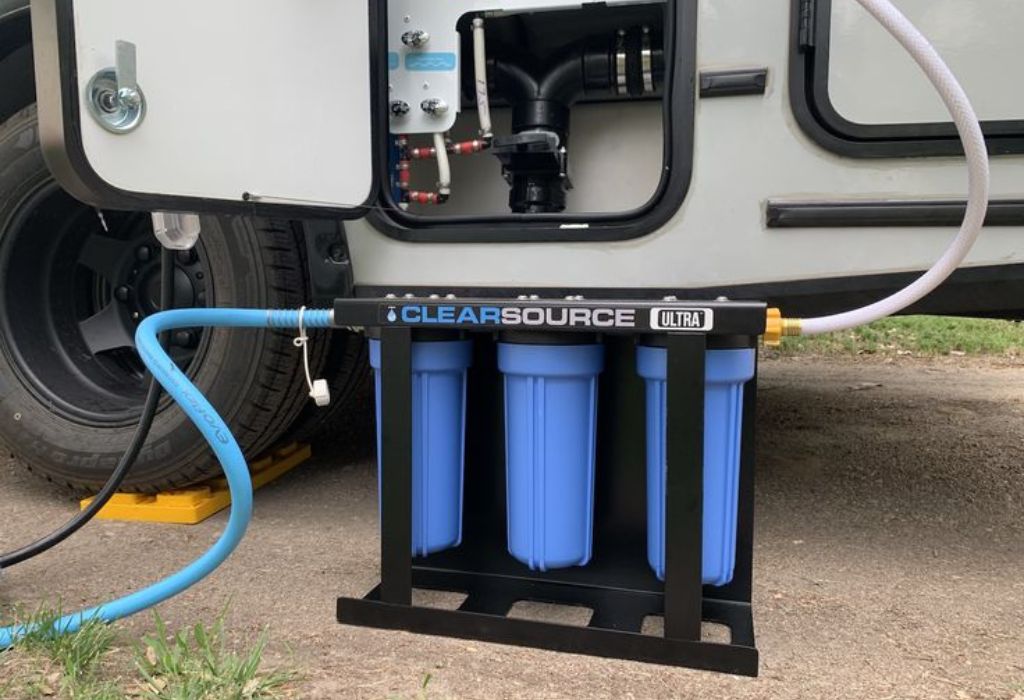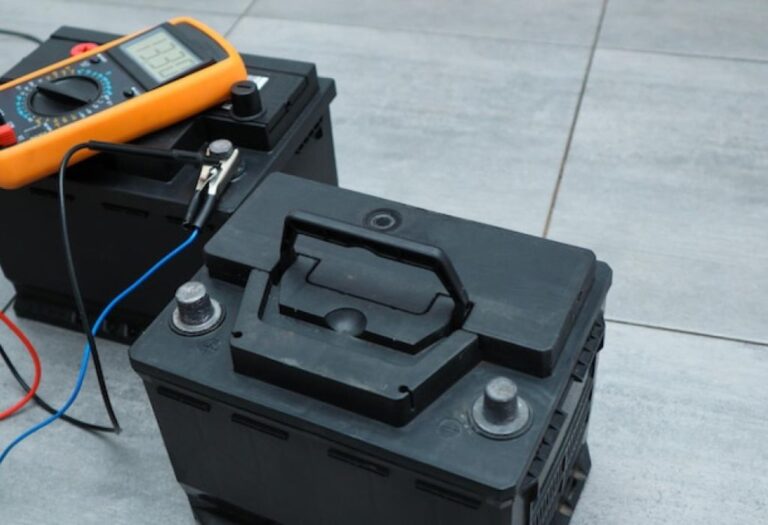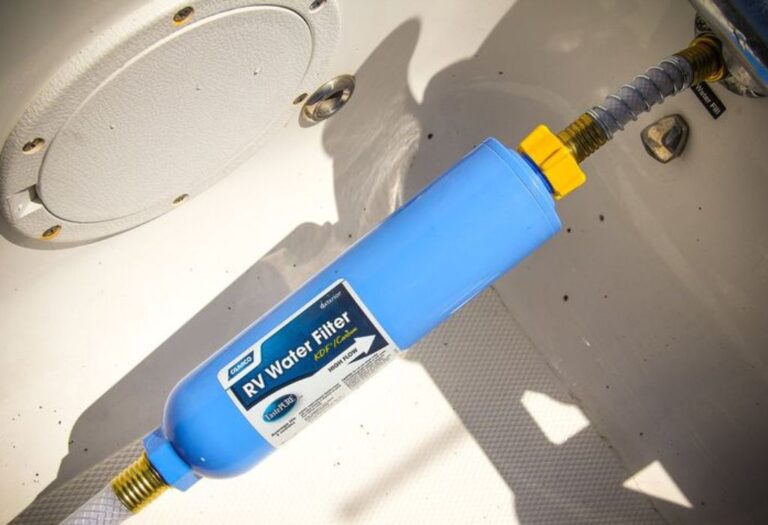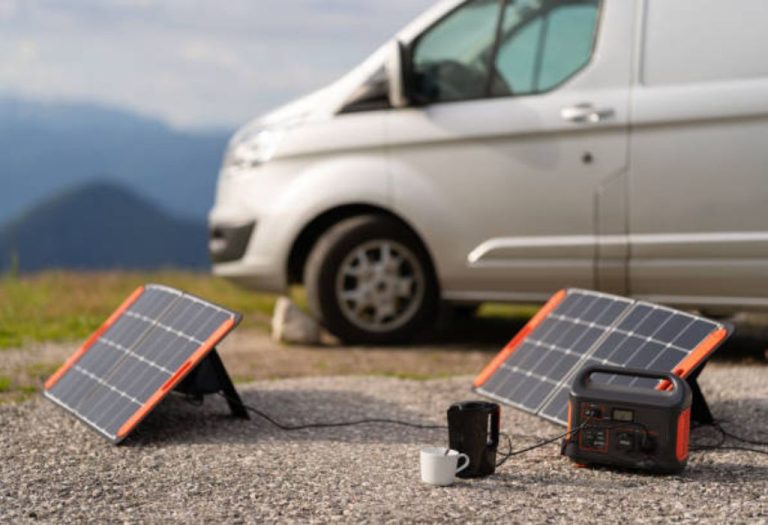How to Clean an RV Water System Properly
Imagine filling your RV sink with water, only to notice an odd smell or cloudy residue. That’s a clear sign your RV water system needs cleaning — something many travelers overlook until it’s too late. Over time, bacteria, algae, and mineral buildup can contaminate your tanks and lines, turning what should be safe, drinkable water into a health hazard.
For RV owners who rely on their water system for cooking, showering, and drinking, cleanliness isn’t just a matter of taste — it’s about safety. According to the CDC, stagnant or untreated water can harbor harmful microorganisms like E. coli and Legionella, which thrive in warm, enclosed systems. Even small amounts of residue or mold inside the fresh water tank can lead to unpleasant odors and reduced water flow.
Regular maintenance of the RV’s water system not only ensures clean, odor-free water but also extends the lifespan of your plumbing components. A well-sanitized system prevents corrosion, protects seals and fittings, and guarantees that your water supply stays safe no matter where you travel.
In this guide, you’ll learn how to clean an RV water system properly, including the step-by-step process, safe bleach ratios, eco-friendly alternatives, and expert tips for long-term maintenance. By following these steps, you’ll keep your RV water fresh, your system efficient, and your next adventure worry-free.
Why Cleaning the RV Water System Matters

Many RV owners underestimate how quickly a water system can become contaminated. Each time you refill your tank, microscopic particles, bacteria, and minerals can accumulate inside. When left untreated, these impurities multiply, resulting in foul odors, discolored water, and even clogged lines that affect water pressure and taste.
A dirty RV water system not only compromises the quality of your water but also poses health risks. Over time, stagnant water encourages the growth of bacteria and biofilm inside tanks and hoses. According to RVIA maintenance surveys, most experts recommend sanitizing the system at least every six months, or immediately after long periods of storage.
Regular cleaning prevents scale buildup, mold, and algae, ensuring your water heater, pump, and plumbing last longer. It also eliminates unpleasant smells often caused by sulfur-producing bacteria that thrive in damp, enclosed environments. Clean water isn’t just about comfort—it’s about protecting your health and your RV investment.
Why should you clean an RV water system regularly?
Because it removes bacteria, mineral deposits, and biofilm that affect both water quality and plumbing performance.
What risks are associated with a dirty RV fresh water tank and plumbing lines?
Contamination can cause foul smells, discoloration, and even illness from harmful bacteria like E. coli.
How often should RV water system cleaning or sanitizing be done?
At least twice a year, or before every major trip if your RV has been stored for long periods.
Does cleaning just the fresh-water tank suffice, or is the entire system involved?
No, the entire system—including hoses, lines, and heater—must be sanitized for complete protection.
What signs indicate the RV water system needs cleaning right away?
Bad taste, sulfur-like odor, cloudy water, or low water pressure are clear indicators it’s time to clean.
Components of the RV Water System to Clean
Your RV water system consists of several key components that all require cleaning to keep water fresh and safe. The most critical parts are the fresh water tank, plumbing lines, water heater, low-point drains, faucets, city water connection, and filters. Neglecting even one of these areas can cause contamination to return quickly.
The fresh water tank stores potable water, while the water heater and plumbing lines distribute it throughout the RV. If any section remains dirty, bacteria can spread back into the clean tank. Cleaning all parts ensures the system stays sanitized and balanced.
What is the “fresh water tank” in an RV and why should it be cleaned?
It’s the main water reservoir, and cleaning it removes bacteria, slime, and debris buildup that form during storage.
Why must the water heater and lines be included in cleaning the RV water system?
Because stagnant water and heat create perfect conditions for bacteria and scale deposits.
How do hoses, fittings, and the city-water connection affect water quality?
Unclean hoses and fittings can introduce dirt or mold every time water is connected.
What role do low-point drains and faucet aerators play in system cleanliness?
They help flush out old water and residue but can harbor bacteria if not sanitized regularly.
When should filters or inline water treatment parts be cleaned or replaced?
Every 3–6 months or sooner if water flow slows down or odor develops.
Step-by-Step Procedure: How to Clean an RV Water System Properly
Cleaning your RV water system is simple but must be done carefully. Start by turning off the water heater and draining the entire system, including the fresh water tank, hot water tank, and plumbing lines. Once drained, bypass the water heater to prevent bleach from entering it during sanitization.
Next, mix your cleaning solution. The standard ratio is ¼ cup of household bleach per 16 gallons of water, or one ounce per eight gallons if your tank is smaller. Pour this mixture into the fresh water tank, then fill the tank completely with clean water. Run the water pump to circulate the bleach mixture through all faucets, showers, and toilet lines until you smell bleach at each outlet.
Let the system sit for at least 4–12 hours to disinfect. Afterward, drain everything and refill the tank with fresh water. Run clean water through all faucets to flush any remaining bleach. Repeat the rinse until no chlorine smell remains.
For those preferring eco-friendly options, alternatives like white vinegar or hydrogen peroxide can disinfect effectively without chemicals. Vinegar is especially useful for removing mineral buildup in hard-water areas.
What first steps should be taken before cleaning the RV water system?
Drain the system completely and turn off the water heater to prevent damage.
How much sanitizer (bleach or alternative) should be used for the fresh water tank?
Use about ¼ cup of bleach per 16 gallons of tank capacity.
How long should the sanitizer mixture sit in the system?
Allow it to sit for at least 4 to 12 hours for thorough disinfection.
How should the system be drained and flushed after sanitizing?
Drain the tanks, refill with clean water, and run through all faucets until the odor disappears.
Are there eco-friendly alternatives to bleach for cleaning the RV water system?
Yes, white vinegar or hydrogen peroxide solutions are safe and effective natural options.
Troubleshooting Common Issues During Cleaning
Sometimes, even after cleaning, issues may linger. If your water still smells or tastes bad, it may be due to residual bleach or hidden contamination in hoses or fittings. Always ensure you’ve flushed the system several times after sanitizing.
Cloudy water often indicates mineral deposits or sediment in the tank. Using a vinegar rinse helps dissolve these minerals and restore clarity. If you notice a sulfur smell, it’s typically caused by bacteria reacting with metal in the water heater. Sanitizing the heater and flushing it separately usually resolves this.
Low pressure after cleaning might mean debris is clogging the aerators or filters. Remove them and rinse under running water. Persistent leaks should be inspected immediately since bleach can weaken old rubber seals.
What causes a rotten-egg or sulfur smell in an RV water system?
Sulfur-producing bacteria inside the heater or tank cause the odor and need sanitization.
Why might water remain cloudy or discolored even after cleaning the RV water system?
Mineral buildup or sediment inside the tank may require additional rinsing with vinegar.
What if the bleach smell persists after flushing the system?
Fill the tank with fresh water and add a small amount of baking soda, then rinse again.
How do you handle mold or slime buildup in the fresh water tank?
Use hydrogen peroxide or vinegar to dissolve it before rinsing with clean water.
What precautions should you take if you detect leaks or damaged hoses during cleaning?
Replace cracked hoses and inspect all fittings to avoid contamination and water loss.
Maintenance Schedule & Best Practices for RV Water Systems

Cleaning the RV water system isn’t a one-time task—it’s an ongoing habit. Regular sanitizing ensures your plumbing remains safe and functional all year. RV experts recommend sanitizing every 6 months or before and after storage periods.
Keep a maintenance checklist that includes flushing low-point drains monthly, replacing filters quarterly, and draining the system before freezing temperatures. Always use a potable water hose marked “drinking water safe” to avoid chemical contamination from garden hoses.
Store your RV with a drained and dry tank whenever possible. Leaving water inside promotes bacterial growth and scale deposits. During long trips, fill tanks with filtered water only, and run a full flush cycle after returning home.
How often should the RV water system be sanitized or cleaned?
At least twice per year or before every long trip.
What best practices prevent contamination between cleanings?
Use potable-water-only hoses, keep tanks full to minimize air exposure, and avoid non-drinking sources.
Should the RV water system be cleaned before and after winter storage?
Yes, clean before storing to prevent mold and again before use to remove antifreeze or debris.
How does using a potable-water-only hose and filtered source improve water system health?
It keeps chemicals, rubber residue, and sediment from entering your fresh water supply.
What is the role of flushing the system regularly even when not in use?
It removes stagnant water and prevents bacterial growth inside lines and tanks.
Conclusion
A clean RV water system is essential for safe, enjoyable travel. Knowing how to clean an RV water system properly prevents odors, contamination, and costly plumbing issues. Regular sanitization not only keeps water safe to drink but also extends the life of your RV’s tanks, hoses, and fittings.
By making water system cleaning part of your maintenance routine, you protect both your health and your investment. Follow these simple steps, schedule regular sanitizing sessions, and always use clean, filtered water sources. With consistent care, your RV’s water will stay as refreshing as the adventures that await you.
I’m David R. Coleman, the founder, lead writer, and lifelong tool enthusiast behind GarageToolPro.com. With years of experience in automotive repair, woodworking, and home DIY projects, I created this platform to share practical tips, detailed tool reviews, and step-by-step guides that help mechanics, hobbyists, and homeowners get the job done right the first time.






